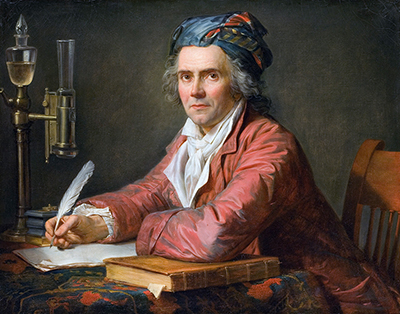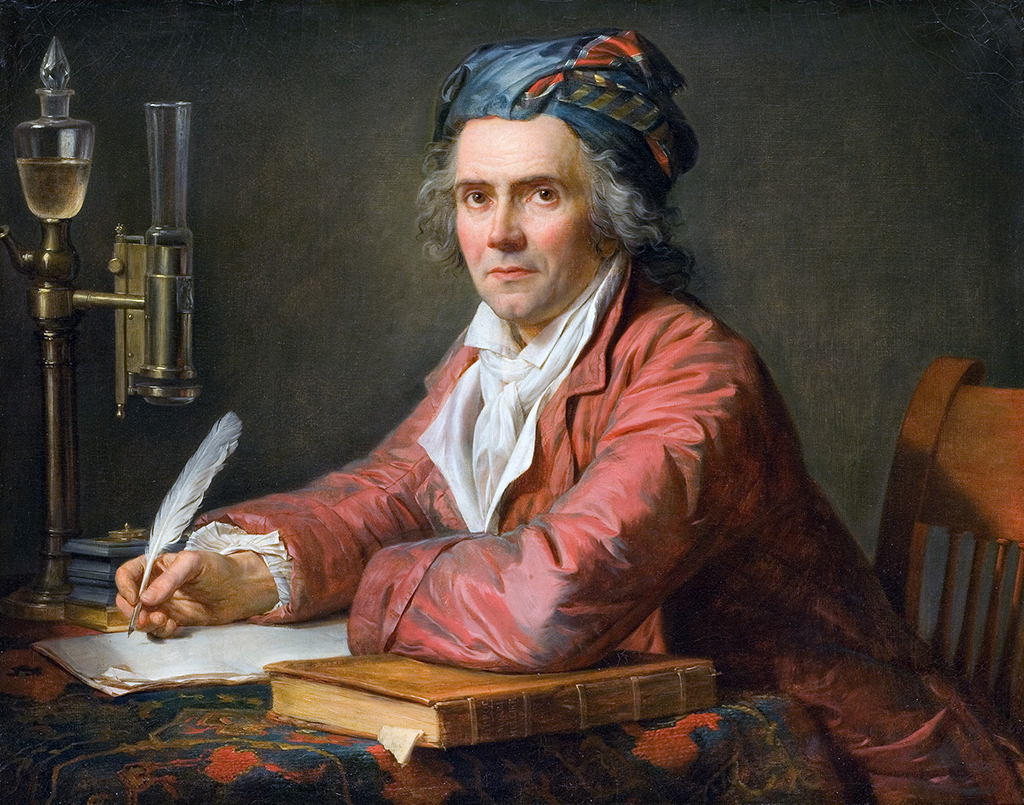The Musee Fabre in Montpellier, France own this well crafted, 1783 portrait painting of Doctor Alphonse Leroy from Jacques Louis David. He was amongst the finest portrait artists in the entire 18th century.
The composition is a specific type of portrait category, where the model is essentially shown 'at-work'. This technique allows the painting to be filled with relevant tools, depending on the role of the individual. These items add both symbolic value but also aesthetic interest. For paintings as old as this, there is then a historic value for us today, too, to see visually how employment from the past was carried out. Naturally, Jacques Louis David would attempt to portray his figures in the best light possible, but there was also normally a close relationship with reality, both in the objects added to the painting, and also the clothing that they would wear for the sitting. The artist used portraiture as a means to supplement his income and also to build stronger connections with different members of the middle and upper classes within French society at that time.
The artist held a keen interest in Greek history and regularly used literature as inspiration for his historical paintings. In the example of this portrait, the doctor leans on a copy of Hippocrates' Morbi mulierum, which presumably Alphonse Leroy would have refered to for help in treating female diseases. He was respected doctor and also midwife, hence this type of literature being upon his person. The addition of this book alongside the lamp is believed to have been the common method by which an artist in the 18th and 19th century would symbolise a study, so one must assume that this is where the portrait was produced. During the 1780s David was known to have been influenced by several North European artists, and we see evidence of that here, with the bright colours which bring the model's clothing to life. The attention to detail also reminds us of some of the characteristics of art from that region. Upon completion, the artwork was displayed at the Salon straight away, in 1783, alongside a separate portrait of an uncle.
There has been some evidence to suggest that the doctor actually served at the birth of the artist's first child, which would no doubt have strengthened their bond. During past centuries, most wealthy individuals would have a single doctor with whom they would be particularly familiar and so friendships and trust would become a key part of this. The decision to produce a portrait of this individual immediately tells us of his importance within the artist's life and also the respected nature that he held within society, as David only really tended to paint members of high society throughout his career.





